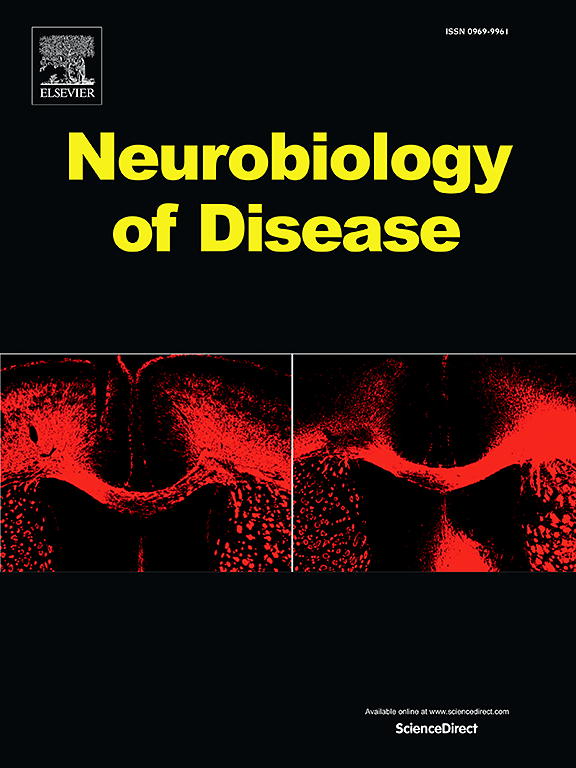CRISPR-based epigenetic editing of Gad1 improves synaptic inhibition and cognitive behavior in a Tauopathy mouse model
IF 5.1
2区 医学
Q1 NEUROSCIENCES
引用次数: 0
Abstract
GABAergic signaling in the brain plays a key role in regulating synaptic transmission, neuronal excitability, and cognitive processes. Large-scale sequencing has revealed the diminished expression of GABA-related genes in Alzheimer's disease (AD), however, it is largely unclear about the epigenetic mechanisms that dysregulate the transcription of these genes in AD. We confirmed that GABA synthesizing enzymes, GAD1 and GAD2, were significantly downregulated in prefrontal cortex (PFC) of AD human postmortem tissues. A tauopathy mouse model also had the significantly reduced expression of GABA-related genes, as well as the diminished GABAergic synaptic transmission in PFC pyramidal neurons. To elevate endogenous Gad1 levels, we used the CRISPR/Cas9-based epigenome editing technology to recruit histone acetyltransferase p300 to Gad1. Cells transfected with a fusion protein consisting of the nuclease-null dCas9 protein and the catalytic core of p300 (dCas9p300), as well as a guide RNA targeting Gad1 promoter (gRNAGad1), had significantly increased Gad1 mRNA expression and histone acetylation at Gad1 promoter. Furthermore, the tauopathy mouse model with PFC injection of dCas9p300 and gRNAGad1 lentiviruses had significantly elevated GABAergic synaptic currents and improved spatial memory. These results have provided an epigenetic editing-based gene-targeting strategy to restore synaptic inhibition and cognitive function in AD and related disorders.
求助全文
约1分钟内获得全文
求助全文
来源期刊

Neurobiology of Disease
医学-神经科学
CiteScore
11.20
自引率
3.30%
发文量
270
审稿时长
76 days
期刊介绍:
Neurobiology of Disease is a major international journal at the interface between basic and clinical neuroscience. The journal provides a forum for the publication of top quality research papers on: molecular and cellular definitions of disease mechanisms, the neural systems and underpinning behavioral disorders, the genetics of inherited neurological and psychiatric diseases, nervous system aging, and findings relevant to the development of new therapies.
 求助内容:
求助内容: 应助结果提醒方式:
应助结果提醒方式:


